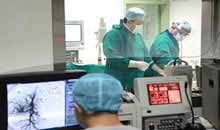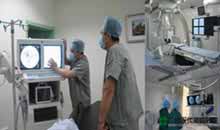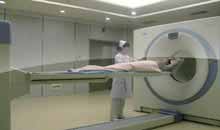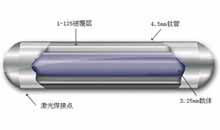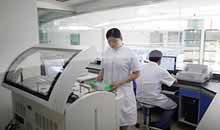What is Gene Targeted Therapy?
 Gene targeted therapy targets the root of the disease by correcting the abnormal gene. Gene targeted therapy is the process of replacing defective or cancerous genes (also called “oncogenes”) with normal genes. The removal of these oncogenes reprograms the cell to its normal state, preventing tumor growth and the spread of cancer.
Gene targeted therapy targets the root of the disease by correcting the abnormal gene. Gene targeted therapy is the process of replacing defective or cancerous genes (also called “oncogenes”) with normal genes. The removal of these oncogenes reprograms the cell to its normal state, preventing tumor growth and the spread of cancer.
China is the only country in the world where gene therapy is developed and licensed by the SFDA (State Food and Drug Administration) to be practiced since 2004.
Why is tumor regarded as a group of genetic diseases?
Genes are the biological units of heredity. Genes determine obvious traits, such as hair and eye color, as well as more subtle characteristics, like the ability of the blood to carry oxygen. Complex characteristics, such as physical strength, may be shaped by the interaction of a number of different genes along with environmental influences.
 Cancer is a group of diseases in which the body's normal self-regulatory mechanisms no longer control the growth of some kinds of cells. Cells are frequently exposed to a variety of agents, from both external and internal sources, which damage DNA. Even minor DNA damage can have profound effects, causing certain genes to become overactive, to undergo partial or complete inactivation, or to function abnormally. Genes control a number of protective pathways in cells that prevent cells from becoming cancerous. For example, pathways that transmit signals for a cell to divide have on-off switches to control cell division. Cells also have mechanisms that allow them to determine if their DNA has been damaged, and they have pathways to repair that damage or eliminate the cell. The failure of any of these protective pathways can lead to the development of cancer.
Cancer is a group of diseases in which the body's normal self-regulatory mechanisms no longer control the growth of some kinds of cells. Cells are frequently exposed to a variety of agents, from both external and internal sources, which damage DNA. Even minor DNA damage can have profound effects, causing certain genes to become overactive, to undergo partial or complete inactivation, or to function abnormally. Genes control a number of protective pathways in cells that prevent cells from becoming cancerous. For example, pathways that transmit signals for a cell to divide have on-off switches to control cell division. Cells also have mechanisms that allow them to determine if their DNA has been damaged, and they have pathways to repair that damage or eliminate the cell. The failure of any of these protective pathways can lead to the development of cancer.
Principle
Gene targeted therapy is using corresponding medicines against the specific carcinogenic sites (those sites could be a protein molecule or a genetic segment in tumor cells). The medicine would take effect by specially combining carcinogenic sites after entering human body, thus tumor cells would die specifically without affecting normal cells around. Briefly, gene targeted therapy aims at a specific gene and then eliminating it. Targeted gene therapy is against disease roots: abnormal genes, this is the fundamental solution for cancer.
Getting genes into cancer cells
 Getting genes into cancer cells is one of the most difficult aspects of gene therapy. Researchers are working on finding new and better ways of doing this. The gene is usually taken into the cancer cell by a carrier called a vector. The most common types of carrier used in gene therapy are viruses because they can enter cells and deliver genetic material. The viruses have been changed so that they cannot cause serious disease but they may still cause mild flu-like symptoms.
Getting genes into cancer cells is one of the most difficult aspects of gene therapy. Researchers are working on finding new and better ways of doing this. The gene is usually taken into the cancer cell by a carrier called a vector. The most common types of carrier used in gene therapy are viruses because they can enter cells and deliver genetic material. The viruses have been changed so that they cannot cause serious disease but they may still cause mild flu-like symptoms.
Some viruses have been changed in the laboratory so that they target cancer cells and unhealthy cells. So they only carry the gene into cancer cells.
How does gendicine fight cancer?
Gendicine's functional component is the p53 gene, a naturally occurring tumor suppressor gene that has been under research in the United States, Europe and Asia for 20 years. The p53 gene exists ubiquitously in normal cells and is one of the most prevalent tumor suppressor genes in the human body. In the medical establishment, its unique properties have earned it the nickname, 'Genome Guardian.' The exact mechanism by which p53 attacks cancerous growths is still under debate, but it appears to exert its anti-tumor activities using one or more of the following mechanisms:
- By causing self-destruction of the cancerous cells
- By alerting neighboring 'killer' cells to the presence of cancerous ones
- By preventing the tumor's cellular self-management
- By inhibiting the defense and propagation mechanisms of the tumor
- By interfering with inter-cellular communication
- By hindering the cancerous cell's nutrient acquisition
Procedures for genetic therapy

- Obtain remedial gene
- Choose genetic carrier
- Choose target cells
- Carry out genetic transmission
- Choose and identify transducer cell
- Return to the blood stream
What are the advantages of gene targeted therapy?
- Gene targeted therapy features high targeting to concentrate medicines on specific tumor.
- It keeps relative high concentration of medicine in tumor partly.
- Drug acting time is delayed.
- Lethality to tumor cells rose.
- Alleviate the patient’s suffering.
- Gene targeted therapy gets the characteristics of non-cytotoxic, effective, harmfulness and high tolerance.
- Medicine combines with routine therapies (like chemotherapy and radiotherapy), can be given separately or jointly, thus better results would be achieved.
Recommended Links
SUSAN: Interventional Therapy and Biological Immunotherapy Defeat Cancer Recurrence Successfully
MIMIE: Modern Cancer Hospital Guangzhou Gave Me a Second Life
Aida Nuguid: Modern Cancer Hospital Guangzhou Is the Instrument that God Sent to Me






